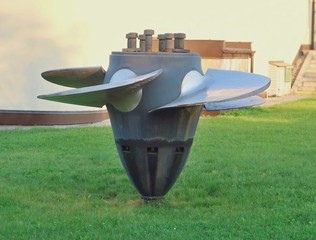We would like to focus on an article which describes an algorithm for the flow rate optimization of hydropower plants. This algorithm was implemented in the optimization system installed in an Italian hydro power plant, in order to distribute the water flow rate between seven vertical Kaplan turbines maximizing the produced power. The new advanced flow control -“optimized”- was added to the typical manual and automatic ones, by merging a mathematical approach (the optimization algorithm) and the physical response (plant delays, dynamics and hysteresis). The paper describes the process, its optimized control and the obtained results/benefits.
The hydro power plant is composed of seven vertical Kaplan turbines, with a total installed power of 11 MW. The turbines follow the direction of the flow stream, and each turbine has an intake tank controlled by an on/off valve. The plant includes also several spillways, which are installed in order to discharge the exceeding water and prevent the basin flood. The main scope of the system is to maintain the upstream level, possibly by avoiding losing of water/energy in the spillways. The upstream level is set in order to have the best/highest Head and consequently the maximum potential energy. The plant control system works in two different operating modes:
‐ Manual Mode, in which the operator decides the flow rate set points for each turbine according to the present situation and their experience.
‐ Automatic, in which the DCS logics define the flow rate set points, by taking into account the turbine priorities and the maximum flow rate capacity for each turbine.
In both operating modes, the first “powered on” turbine performs the level regulation meanwhile the rest of the turbines are used to provide the energy. The dynamic response at upstream water flow variations can be quite slow and not precise, by using the above-mentioned control philosophy, and the level-regulating turbine can be subject to high solicitations and high set points variations. To improve the control, a different regulation approach was implemented to optimize the load/efficiency, by maintaining the desired level and avoiding losing water through the spillways.
The solution is an optimization system with the following features:
‐ Objective function = Maximum load, minimize water losses
‐ Constraints = Level set point or total water flow request
‐ Input = Available turbines, total water flow request
‐ Output = Water flow set point for each turbine
The level regulation is thus defined/maintained automatically by all the turbines and the response at flow rates variations is faster, more precise, and more effective by avoiding high solicitations and set points variations. The new algorithm was developed and then tested by comparing with nonlinear programming solution. Once validated, the algorithm was implemented in a SW package and integrated in with the Hydro Power Plant automation.
For further information please contact us at info@now-es.com

